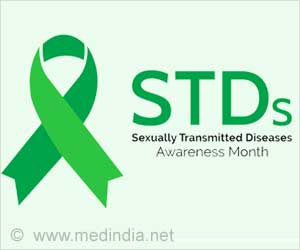This campaign was started by the Centers for Disease Control and Prevention (CDC) as an effort to slow down the nation’s increasing
rate.
False beliefs about STDs how they’re spread, prevented, and treated are spilled everywhere, and it can be difficult for people to pick the right one. The most important thing is that you have to make sure that all your information, provided for STD prevention and testing, are correct(
).
has halted the routine health screenings and caused a dramatic drop in STD testing. This doesn’t mean that there’s been a drop in STD cases or an increase in protected sex or abstinence(
).
Knowing your STD status is a crucial step to stopping transmission. If you know you are infected, you can take steps to protect yourself and your partners. Even if you are asymptomatic, or not experiencing any changes in your health, you can unknowingly spread an infection to your partner.
How to Get Tested?
If you are sexually active, getting tested for STDs is a must to do a thing for your health. Have an open and honest conversation with your healthcare provider about your sexual history and STD testing. This will help them understand what STD tests you may need.
Here is the list of STD tests everyone should be aware of(5✔ ✔Trusted Source
How Do Sexually Transmitted Infections Affect People with HIV?
Go to source, 6✔ ✔Trusted Source
How to Get Yourself Tested
Go to source)
- All adults and adolescents from 13 to 64 years should be tested at least once for HIV.
- All sexually active women younger than 25 years or older with risk factors such as new or multiple sex partners or a sex partner who has an STD should be tested for gonorrhea and chlamydia every year.
- Pregnant women should be tested for syphilis, HIV, hepatitis B, and hepatitis C.
- All sexually active gay, bisexual, and other men who have sex with men should be tested at least once a year for syphilis, chlamydia, and gonorrhea. Those who have multiple or anonymous partners should be tested more frequently (e.g., every 3 to 6 months).
- People who have oral or anal sex should talk with their healthcare provider about the throat and rectal testing options.
End the Stigma
STDs are just infections and they have no moral or immoral component. They infect people regardless of race, gender, religion, or sexual orientation, and equip yourself with education and awareness that can help destigmatize and encourage testing.
References :
- Sexually Transmitted Infections Awareness Month – (https://www.ashasexualhealth.org/sexually-transmitted-infections-awareness-month/#:~:text=Each%20April%2C%20ASHA%20recognizes
%20STD%20Awareness%20Month.) - About STD Awareness Week – (https://www.cdc.gov/std/saw/about.htm)
- Sexually transmitted infections (STIs) – (https://www.who.int/news-room/fact-sheets/detail/sexually-transmitted-infections-(stis))
- Sexually Transmitted Disease (STD) Awareness – (https://www.dhhs.nh.gov/dphs/bchs/std/std-awareness-month.htm)
- How Do Sexually Transmitted Infections Affect People with HIV? – (https://www.hiv.gov/hiv-basics/staying-in-hiv-care/other-related-health-issues/sexually-transmitted-diseases)
- How to Get Yourself Tested – (https://www.cdc.gov/std/saw/gyt/howtoGYT.htm)
Source: Medindia



